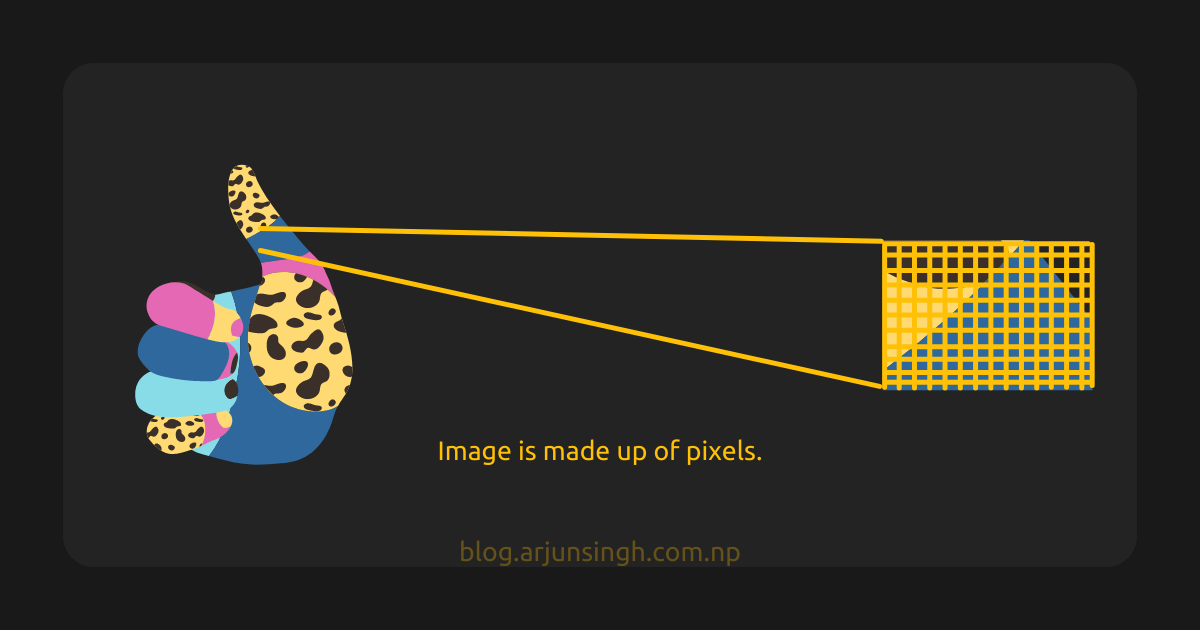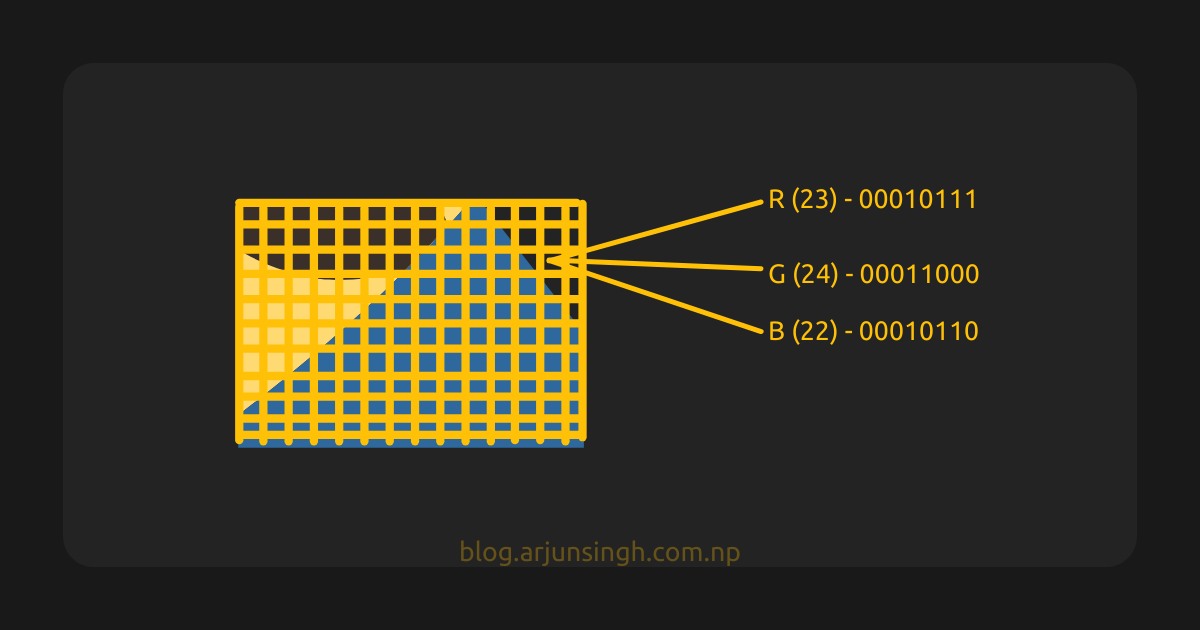Now you understand what steganography is, let's take a look at how it is implemented. Here, we'll discuss Image Steganography.
Image Steganography simply means hiding messages, files, or even image itself in an image. The question arises, how?
Let's say you have a text message, now you want to hide that in an image.
For this, I assume you have a basic understanding of the Binary number system and image pixels.
Each image is made up of pixels. When you say the size of the image (i.e., 640x320), that actually means pixels in a row and pixels in a column.
Now that pixels contain a color value to display. Every pixel has an RGB value, that represents a color. In this stage, we know that color values are ranged 0 to 255 (256 of total). And Red, Green, Blue colors can make any other colors together.
We all know, computer stores anything in binary numbers. So, the RGB values of each pixel are stored as a binary number of 8 bits.
That's enough of understanding binary numbers and images. Let's dive into the actual thing.
Whatever message we have, is first converted to binary numbers. Let's take the number 5 as our example message. So 5 is first converted to a binary number.
After that, these binary numbers are replaced in Lease Significant Bit of the image's pixels' color value.
That's it. The image's colors are not accurate, but we can't tell the difference with our naked eyes. No doubt the color codes of the image are changed.
To decrypt a message from an image, we can just use the reverse algorithm. That means, first capturing all the least significant bits of the image's pixels' colors' and rearranging them.



